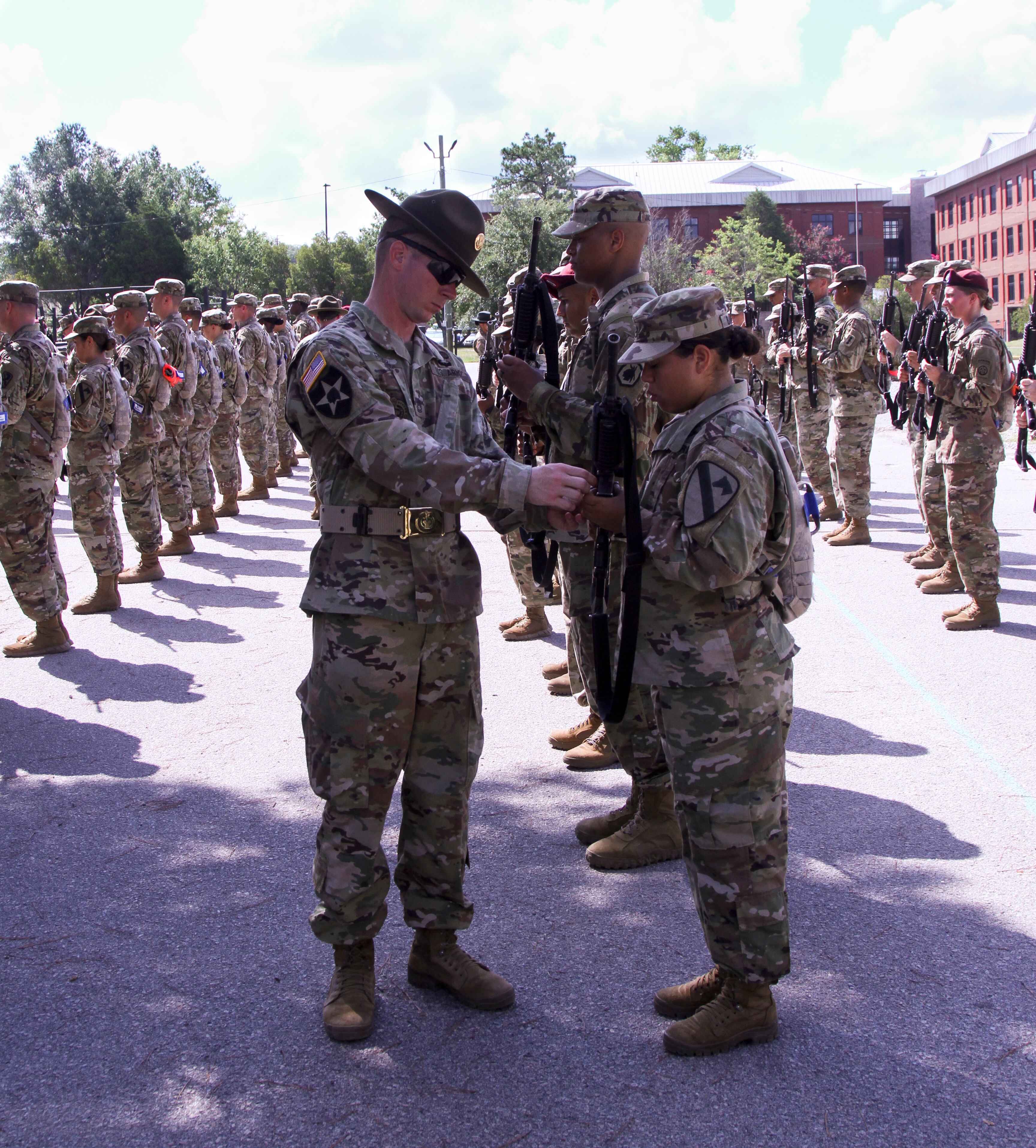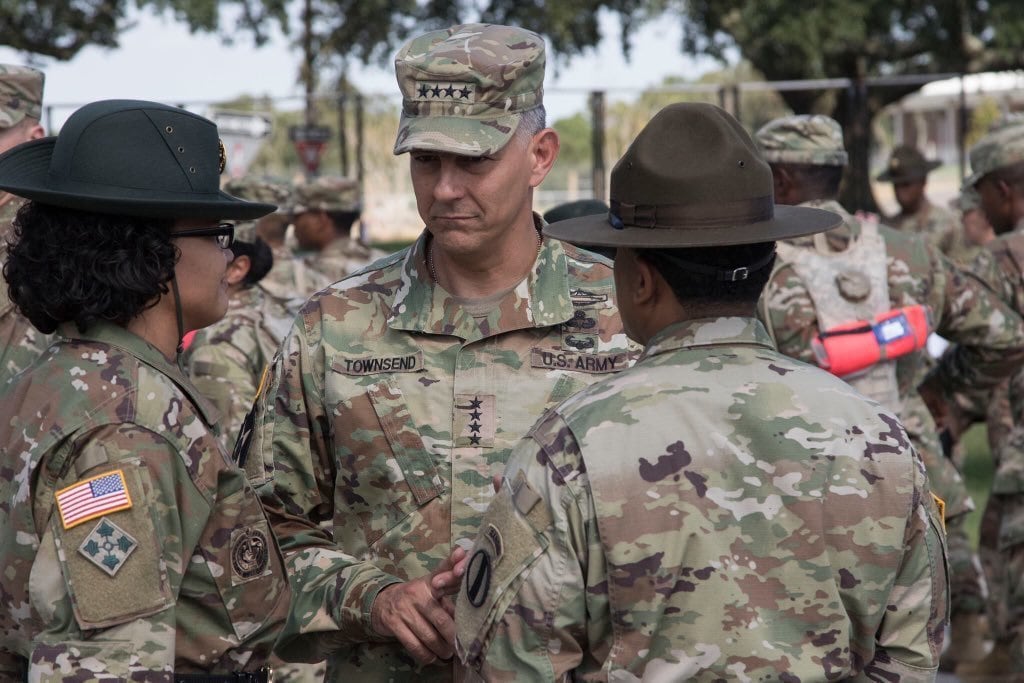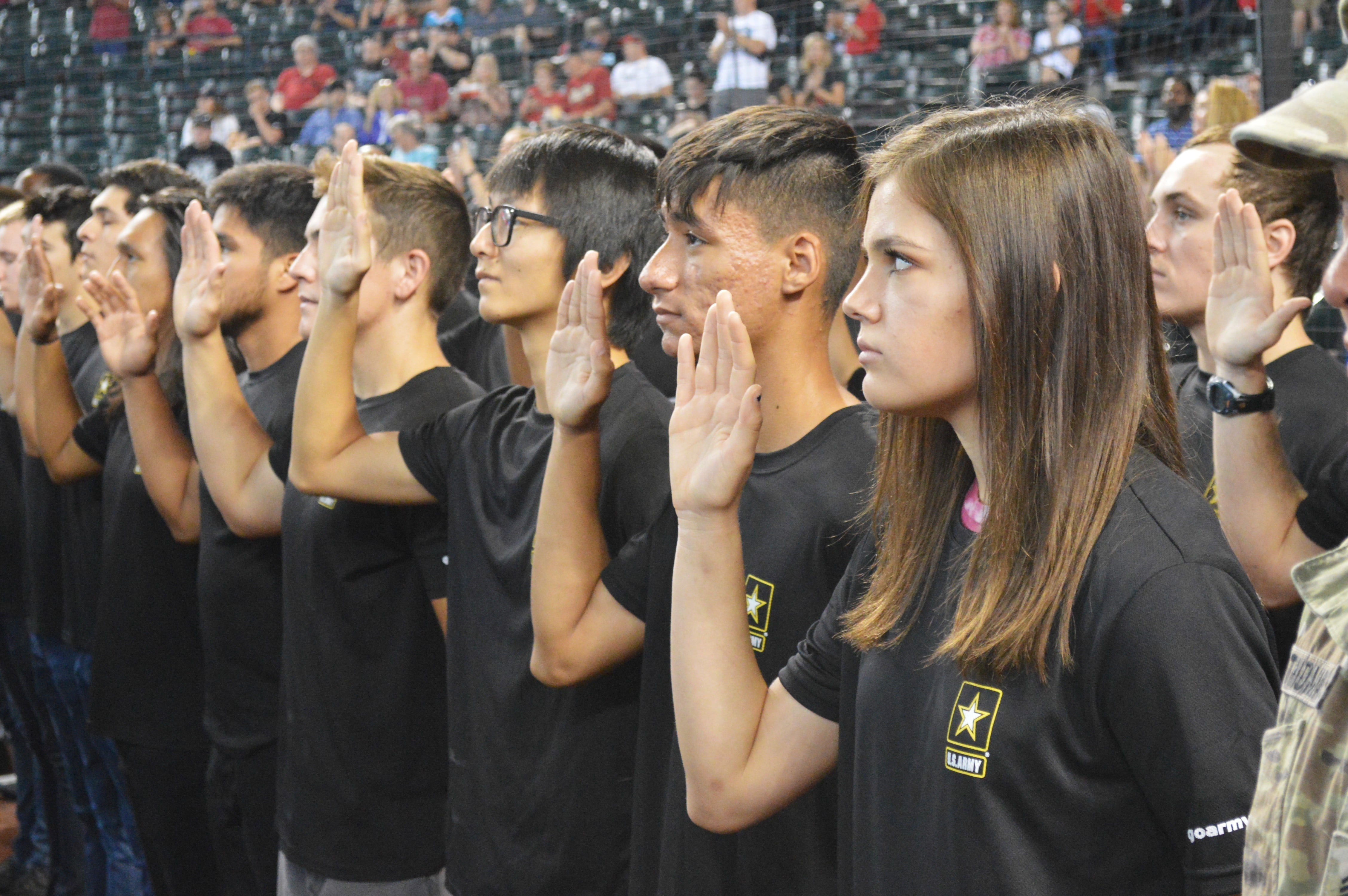When the Army announced that it had under-performed on its 2018 recruiting goal back in September, officials cited a handful of factors. The economy is booming, the pool of legally and medically eligible young Americans is shrinking and, in general, a smaller and smaller percentage of Americans are interested in serving.
According to statistics often cited by leadership, that boils down to less than one percent of college-aged youth who are both interested in serving and within the Army’s enlistment requirements. But as the service builds its way up to half a million active-duty soldiers, leaders are taking a hard look at the way they can appeal to the current crop of 17- to 24-year-olds.
And, it turns out, that healthy, criminal record-free 29 percent who meet current standards isn’t a catastrophic number.
“If we recruit successfully from the 30 percent that’s there, that’s more than enough to fill our armed forces — not just the Army,” Gen. Stephen Townsend, head of Training and Doctrine command, told an audience Oct. 10 at the Association of the United States Army annual meeting in Washington, D.C.
So the trick, going forward, will be convincing those millions of young people that joining the Army is just as good an option as going straight to college, learning a trade or joining the workforce.
That is difficult, any service official will tell you, when the economy is doing well. But rather than leaning on a bad jobs market, leaders are looking long-term at how to elevate the Army to a top choice rather than a last resort.
“Every one of you is a recruiter,” Army Secretary Mark Esper declared Oct. 8 at the AUSA annual meeting.
Practically, the vast majority of Americans who enlist have a family member ― and, very often, a parent ― who has served. But as the number of American veterans dwindles, so too do the numbers of people who have friends or family with military experience who might inspire them to join.
“Let’s facilitate the conversation at the American dinner table,” Sergeant Major of the Army Dan Dailey told Army Times in September.
So, how do they break through? When the majority of Americans aren’t serving and have never served, where will that conversation creep into those daily lives?
“There’s so much more to military service that we’re not communicating,” Dailey said.
So first, the Army will have to make an assessment of itself: What do we do, what can we offer, and how can we translate that for people outside of the service?
“The Army does two things with consistency in my mind: We don’t see ourselves very well, and we talk to ourselves about ourselves a lot," Army Cadet Command’s Maj. Gen. John Evans said Oct. 9 at AUSA. "So we have got to get better about doing things differently in that regard.”
Finding a brand
The gold standard of messaging and marketing has long been the Marine Corps, whose advertisements prominently feature impeccably groomed Marines standing tall in dress blues alongside their “The Few, the Proud,” recruiting slogan.
That tagline has stuck for decades, while the Army has cycled through “Be All You Can Be,” “Army of One” and “Army Strong” in the previous forty years. Perhaps because of the service’s small end strength numbers and thus small recruiting mission, but also perhaps because of its clear brand recognition, the Marine Corps has not recently struggled with bringing in new recruits.
The message is clear: If you want to kill bad guys and do it really well, the Marine Corps is the place for you. But, of course, the Army is also possibly the place for you.
“I mean, look at what the United States Army does, what the United States Army has always done: It closes with and destroys the enemies of our country in close quarters combat and ground maneuver,” Army Chief of Staff Gen. Mark Milley told Army Times in September.
There might be more than 150 military occupational specialties to choose from in the Army, but everyone is working toward the same end.
“When you join the Army, you are not joining the Boy Scouts. You are joining an organization that goes out and engages with the enemies of our country,” Milley said. “There are reasons why 70 or 80 percent of the casualties end up being Army casualties and Army infantry casualties, because that’s what we do.”
That message sticks for many young Americans, but it doesn’t convey the full scope of what the Army has to offer. American mothers who are hesitant to send their babies off to war might be interested in the education benefits the Army has to offer, or the countless intelligence, linguistics or other support functions that offer valuable civilian career training and are less likely to come with relentless firefights.
“Because the Army is so big and so diverse, there are so many opportunities and different ways to serve. I think that actually is a strength of the Army,” retired Gen. Carter Ham, the president of AUSA, told Army Times in September. “Do you want to be a veterinary technician? Do you want to be an x-ray specialist? Do you want to be an air traffic controller? Do you want to be a cook? I mean, whatever you want to do in life ... there is probably a role for you in the United States Army. I think the Army has to take advantage of that opportunity.”
Back in July, Dailey told reporters that leadership was on the hunt for a new slogan that would resonate with the many kinds of people who might be interested in the Army.
“I think we’ve got to change our marketing strategy as an Army, and we’re taking a look at that now,” he said. “I think we’ve just got to arm the influencers in America with the right information about what it is to serve in the Army, and I don’t think we’ve been doing that.”

Now what?
As the booming summer recruiting season came to an end, the service announced that ― despite technically having its largest recruiting year in almost a decade ― it had fallen a full 6,500 sign-ups short of its goal, which had already been reduced from 80,000 to 76,500 in April.
At the same time, Esper has pushed hard to raise recruiting standards this year, reducing the number of low-quality recruits allowed in each year and requiring that allowed prospects who failed an initial drug or alcohol test receive a waiver from Army headquarters to ship out to basic.
“This year, despite knowing months in advance that we’d probably come up short of our goals, the Army senior leaders decided to raise our quality marks,” Townsend send Oct. 10.
But leadership has placed a bet that better quality recruits will lead to lower first-term attrition rates and more readiness in the long term, so they stuck with it.
“We could have, with the stroke of a pen, the secretary of the Army could have said, ‘Okay, we will get the numbers. We will change this to that and change this to that.’ We could have done that easy, and then the headlines would be, ‘oh, the Army made their numbers,’ ” Milley told Army Times in September, alluding to a long trail of press coverage on the Army’s fluctuating recruiting standards. “Okay, fine, but it’s the quality that matters, … and over time that will play out as a more ready force.”
So, 2018 became a reckoning for the Army. The old method of shabby, out-of-the-way recruiting stations, endless phone calls following up on leads and a desire to get into the family business are no longer enough.
RELATED

“This industrial organization we’ve had has enabled us to accomplish our mission with just, kind of, brute force,” Townsend said.
Recruiting skyrocketed in the decade after 9/11, which dovetailed with a post-2008 economic downturn that boosted recruiting once again. Then came a drawdown as combat operations ended in Iraq and Afghanistan, and so recruiting goals became quite manageable.
"When you’re not having to strive to achieve your goal, because your numbers are going down, it doesn’t pressurize your recruiting,” Townsend said.
But then the 2017 National Defense Authorization Act changed everything, giving the service room for 26,000 more active-duty troops and kicking off a new march toward an active end strength of 500,000 soldiers. They pulled it off by the skin of their teeth in 2017, largely through retention, but hit a recruiting wall in 2018.
The Army was meant to add 7,500 soldiers to the active component this year. But by the numbers, it didn’t grow at all.
“As a good Army organization, you always do the after-action assessment after something like this,” Maj. Gen. Frank Muth, commander of Army Recruiting Command, told Army Times in October.
So, they visited recruiters to get their opinions on what went wrong. The feedback: Kids need more familiarization with the Army in general, and we can’t stay in contact with them over the phone anymore. But there is hope.
“The Z Gens are a little bit different,” Muth said. “They do want to serve, they do want to do something bigger, they do want to contribute.”
Some newer strategies are already off and running. At the Miramar Air Show in San Diego this year, the Golden Knights parachute demonstration team showed off its prowess at an event perennially headlined by the Navy’s Blue Angels.
For anyone particularly wowed by the black and gold-clad paratroopers, a mobile, virtual recruiting vehicle was on site to give anyone interested a hands-on Army experience.
“This is what a cyber MOS is,” Muth said of their usefulness in giving a picture of service outside of direct combat. “This is what a medical, technical MOS looks like.”
Army recruiting also wants to go where it hasn’t focused so much before: Big cities and the coasts, rather than so heavily in the south.
“We’ve used those areas to offset our lack of performance in other parts of the country,” Townsend said. “Well, that’s not where the population is growing the most. We have to succeed in those areas."

Cities like New York, Chicago, Denver, Dallas, Seattle and Boston are some of the 22 cities on their target list.
"You go visit the recruiting station that is sitting in the mall, and they are the only store left in the mall,” Muth said. “Or it’s above a liquor store in some city.”
Propensity to sign up jumps to about half, Townsend said, when recruiters have a chance to pitch young people face-to-face, so they have to work on going where the people are.
But parents tend to be the number one reason prospective recruits decide to go ahead or back out, so reaching them ― the “influencers,” as senior leaders call them ― will be crucial.
“And so my aim this year is to get more of that," Dailey said of marketing directly to parents. “You have to first instill a perception before you can change it.”
Have you heard of TikTok?
Neither had much of senior Army leadership until recently, Muth said.
It’s a video and livestreaming smartphone app that had half a billion regular users as of June. The Army has figured out that if they want to interface with young people, Facebook, Twitter and Instagram are not their best bets, because the kids are spending much more time on streaming apps.
For young people who watch video game streams on Twitch, the Army this summer put together an esports tournament featuring soldiers from four installations playing Street Fighter V. Kids at home got the chance to see active-duty soldiers doing something that they themselves enjoy.
And if that looks like a cool job, they can head over to goarmy.com, which is due for a face-lift.
“It hasn’t been updated in about 10 years, and it just doesn’t compete with what’s out there today,” Townsend said.
The number of Americans watching live television has dropped way down over the past several years, and those numbers are in the basement for the Army’s target demographic. However, according to a Rand Corp. study released earlier this year, commercials are still a useful recruiting tool.
They just have to be shown on the right platforms, and they have to speak to the generation they’re meant to attract.
“It’s a little embarrassing to sit here and tell you all that we haven’t had a new commercial in two or three years,” Townsend said in early October. “As of last week, the ones that are running today are two or three years old.”
The service delivered on both of those promises on Oct. 18, when it launched a new “Warriors Wanted” online site and a commercial called “This Is What Army Warriors Do.”
Fall and winter tend to be the slow months for recruiting, so it will be hard to know whether the changes are making an overall effect until next summer, but the Army is shooting for about 66,000 new soldiers this year.
Meghann Myers is the Pentagon bureau chief at Military Times. She covers operations, policy, personnel, leadership and other issues affecting service members.





